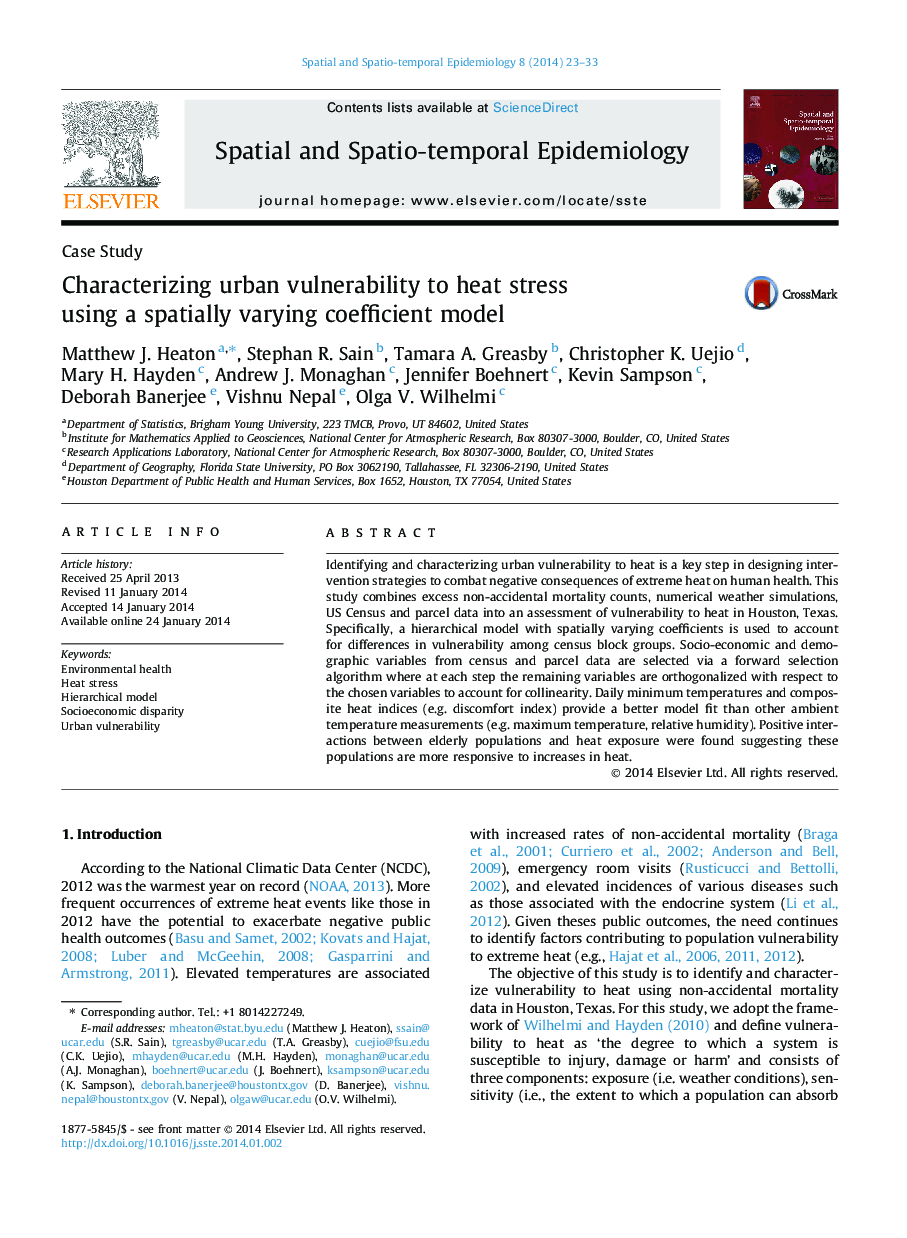| Article ID | Journal | Published Year | Pages | File Type |
|---|---|---|---|---|
| 1064350 | Spatial and Spatio-temporal Epidemiology | 2014 | 11 Pages |
•We model heat-related mortality counts by block group in Houston, Texas.•Spatially varying coefficients capture different heat effects across Houston.•Daily minimum temperatures provide the best fit to the mortality data.•Elderly populations are more responsive to increases in heat.
Identifying and characterizing urban vulnerability to heat is a key step in designing intervention strategies to combat negative consequences of extreme heat on human health. This study combines excess non-accidental mortality counts, numerical weather simulations, US Census and parcel data into an assessment of vulnerability to heat in Houston, Texas. Specifically, a hierarchical model with spatially varying coefficients is used to account for differences in vulnerability among census block groups. Socio-economic and demographic variables from census and parcel data are selected via a forward selection algorithm where at each step the remaining variables are orthogonalized with respect to the chosen variables to account for collinearity. Daily minimum temperatures and composite heat indices (e.g. discomfort index) provide a better model fit than other ambient temperature measurements (e.g. maximum temperature, relative humidity). Positive interactions between elderly populations and heat exposure were found suggesting these populations are more responsive to increases in heat.
